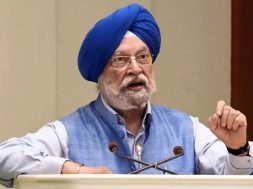India soon to be the third-largest construction industry in the world

Shri Hardeep Singh Puri, Minister of Housing and Urban Affairs and Petroleum & Natural Gas, emphasised the importance of the construction sector to the Indian economy.
Construction sectors in India are expanding at the fastest rates. It employs the second-most people in the nation and has ties both forward and backward to 250 different economic sectors. According to estimates, by 2025, India’s construction market will rank third in the world.
Speaking at the National Workshop’s opening, the Minister discussed “Recent Development with Recycling and Use of C&D Waste in the Construction Sector.” Dignitaries in attendance were May-Elin Stener, the Norwegian ambassador to India; Shri Manoj Joshi, the secretary for housing and urban affairs; and Shri Rajesh Kumar Kaushal, the director general of the CPWD.
Participants in the workshop, which was hosted by CPWD in association with SINTEF Norway, discussed a range of topics related to encouraging the use of C&D recycled materials in the construction sector. Professionals in the C&D recycling sector are attending the session to share their perspectives and learn about the benefits of using the aforementioned products for sustainable development.
Speaking at the event, Shri Puri stated that the built environment is being created at a rapid pace. He cited data regarding the nation’s urbanisation requirements, stating that by 2030, India will require the addition of 700–900 million square metres annually for commercial and residential space. Infrastructure would be a crucial part of our goal if we want India to be a developed nation by 2047, he continued.
The Minister acknowledged the environmental concerns related to the construction industry, particularly the trash generated by construction and demolition (C&D). She stated that as construction activity increases, it will be necessary to find more effective ways to manage the C&D waste that will inevitably arise.
Speaking on the prospects and problems associated with construction and demolition trash in India, Shri Puri stated that this type of waste is among the world’s biggest sources of solid waste and the construction sector in India produces between 150 and 500 million metric tonnes of building and demolition debris annually. This highlights several issues, including incorrect mixing with biodegradable garbage, illegal dumping, and a shortage of disposal space. He stated that there is a great need for solutions in this area that will facilitate waste reduction and material recycling.
The Minister underlined the efforts made by the government to manage waste in an environmentally friendly manner and stated that the 2015 introduction of the urban missions is a great example of the government’s green vision, which uses sustainable methods to create infrastructure and provide services.
In terms of solid waste management, solid waste processing has grown dramatically, according to Shri Puri, from just 17 percent in 2014 to over 77 percent in 2024. “Now, we are transferring these capabilities to other forms of waste management, including C&D waste, plastic waste, e-waste and bio-hazardous waste. The government has released elaborate guidelines on these issues.” the Minister added.
He stated, “Our government has released comprehensive guidelines across the value chain on effective disposal of C&D waste.”
The Minister emphasised that the Ministry of Housing and Urban Affairs (MoHUA) has advised all states, union territories, and urban local bodies to gather information on the generation of construction and demolition waste for each major city or town, encourage the separation of construction and demolition waste at the source, and set up institutional mechanisms for the collection of construction and demolition waste. The Minister discussed the progress the MoHUA has made in changing the way all parties view the management of construction and demolition waste.
Speaking about the efficiency of government C&D waste processing, Shri Puri pointed out that 6,303 TPD of C&D garbage is generated daily in the NCR alone, and of this, around 78 percent is treated daily.
In his closing remarks, the minister asked the parties involved to assist the government in developing more efficient plans for the use of C&D waste.
Cookie Consent
We use cookies to personalize your experience. By continuing to visit this website you agree to our Terms & Conditions, Privacy Policy and Cookie Policy.







